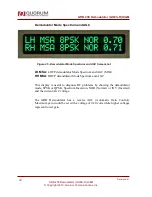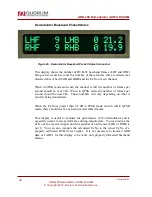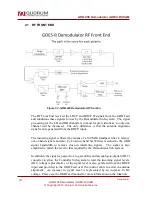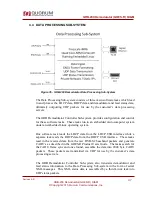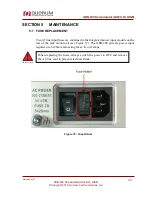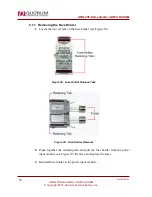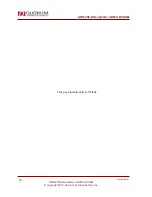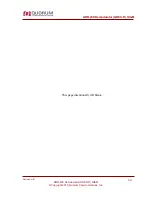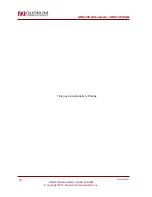
GRB-200 Demodulator (GOES-R) OI&M
GRB-200 Demodulator (GOES-R) OI&M
© Copyright 2015, Quorum Communications, Inc.
45
Revision A.01
4.2 DEMODULATOR SUB-SYSTEM
Figure 33 - GRB-200 Demodulator Sub-System
The Demodulator Sub-system converts the incoming processed 140 MHz IF
signals to quadrature digital values and demodulates the incoming data. This
process is identical for the LHCP and RHCP data so only one will be discussed.
The incoming 140 MHz IF signal is presented to a quadrature tuner which
converts the IF to I and Q quadrature signals at near baseband (zero IF). A 280
MHz local oscillator provides the quadrature mixer inputs. The quadrature tuner
also provides an AGC function under control of the demodulator ASIC to match
the baseband signal levels to the A/D inputs.
The I and Q baseband outputs of the quadrature tuner are digitized at a 135 MHz
rate with 8 bit resolution and made available to the DVB-S2 demodulator ASIC.
The DVB-S2 Demodulator ASIC monitors the digital output of the A/D’s and
provides an AGC control signal to the quadrature tuner to optimize the digital
values utilized in the demodulator. The quadrature digitized baseband signals are
processed by the DVB-S2 ASIC to provide carrier and clock recovery,
demodulation of the QPSK or 8PSK GOES-R signal, application of the BCH and
LDPC error detection and correction algorithms and ultimately burst output of a
completely processed baseband DVB-S2 frame which is made available to the
Data Interface Sub-system.


